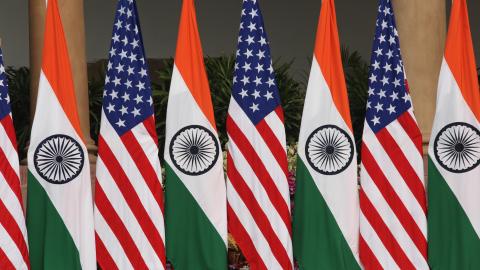When US President Joe Biden and Indian Prime Minister Narendra Modi met in early September 2024 for a bilateral summit, the announcements that made headlines were related to the semiconductor industry and the high-tech sector. However, if both countries want India to become an alternative to China or “the factory of the world,” India needs to build its industrial base and bolster its stagnant manufacturing sector. This is a key area where the US-India economic partnership can deliver long-term results.
In India’s quest to become a major manufacturing hub, the United States is an ideal partner. The US can provide investments and technology to power India’s factories, while India can serve as a “China-plus-one” destination for American firms. As American policymakers seek to reduce dependence on China for manufacturing, India stands out as the ideal country: a friend, a partner, with a critical geostrategic location, a large labour pool, and enormous economic potential.
However, to unlock the potential of this partnership, both countries need to prioritise their relationship and reassess current policies. Instead of pursuing an industrial policy that selects specific sectors and incentivises certain players, a focus on creating a competitive business environment to attract foreign investors and nurture industries would better serve India’s interests. There is little reason to believe that the government’s intuition is more accurate than the market’s feedback mechanism.
This is not to suggest that governments have no role to play. Instead, the government should focus on enhancing the predictability and transparency of regulatory systems. This would reduce policy uncertainty for foreign investors and foster an attractive business environment. Clear and consistent regulations would streamline business operations and compliance, increasing efficiency and reducing costs. India would benefit from leveraging its increased state capacity to implement and enforce policies that support businesses while avoiding coercive actions that create chilling effects on companies and investments.
In addition to regulatory costs, high tariffs on inputs and intermediate goods often render Indian goods uncompetitive in global markets. Reducing or eliminating import duties would go a long way in boosting manufacturing, especially in high-tech sectors that rely on substantial intermediate components.
India’s 1991 reforms provided the ballast for the economic boom of the early 2000s and helped lift millions out of poverty while growing the economy. However, since then, successive governments have been reluctant to implement the next set of factor market reforms in land, labour, and capital markets.
Factor market reforms are difficult, given the narrow political economy corridor within which India operates. The way forward may involve experimenting with contentious reforms in select smaller jurisdictions. These “policy labs” could provide policymakers in Delhi and elsewhere with best practices for proceeding with and rolling out more such projects.
Trade differences, people-to-people ties
In a recent joint report, the Hudson Institute and Takshashila Institution proposed ideas for how the two countries can work closer together and take their economic cooperation to the next level.
The report calls on both countries to resolve their trade-related differences amicably, as demonstrated by their recent settlement of WTO disputes outside the organisation’s dispute resolution framework. Additionally, it suggests that the two nations explore framing a shared set of norms on technology and intellectual property enforcement to boost private sector confidence in India’s markets and manufacturing.
Ironing out differences and establishing a shared set of norms can help build technological infrastructure in frontier technologies, such as developments in biotechnology, space technology, and artificial intelligence, from which the US, India, and other like-minded partners can benefit. For instance, like the semiconductor industry, the next step could be for India to explore the possibility of setting a biomanufacturing hub with Quad partners.
Key to the growth of the Indian economy, including the manufacturing sector, is physical infrastructure. In recent years, India has prioritised capital expenditure, as reflected in increased Union budget allocations for infrastructure. Capital and technology from the US can further facilitate the construction of production-ready factories, expansion of transport networks for goods and people, and development of ports to facilitate exports.
Given the nature of India’s federal system, states have the authority to make decisions regarding infrastructure development, issuing permits, and fast-tracking projects. Both the US and India would benefit from enabling and supporting state-to-state and city-to-city cooperation.
People-to-people ties have long been the underlying bond between India and the US. Historically, this has been largely one-sided, as reflected in the over 200,000 Indian students studying in the US annually, along with the thousands of Indians holding work visas and permanent residency, in addition to almost 5 million Indian Americans. There is a need to incentivise and make it easier for Americans to travel, study, work, and live in India. A more open bilateral visa regime would help demystify India for American investors and facilitate easier movement of personnel. This would cultivate a web of personal connections across corporate sectors through summits and conferences, leading to a cross-pollination of ideas between the best and brightest from both nations. Ultimately, this will add much-needed momentum to India’s manufacturing sector.
A strong India-US economic partnership in manufacturing is critical to the national security goals of both countries. Regardless of which party wins the elections in November 2024 in the United States, leaders of both countries have a unique opportunity to leverage this partnership to make it the defining relationship of the 21st century.
Read the first part of this article here on why India needs to rethink its policies for the manufacturing sector to become a global manufacturing hub.
Enjoyed this article? Subscribe to Hudson’s newsletters to stay up to date with our latest content.















